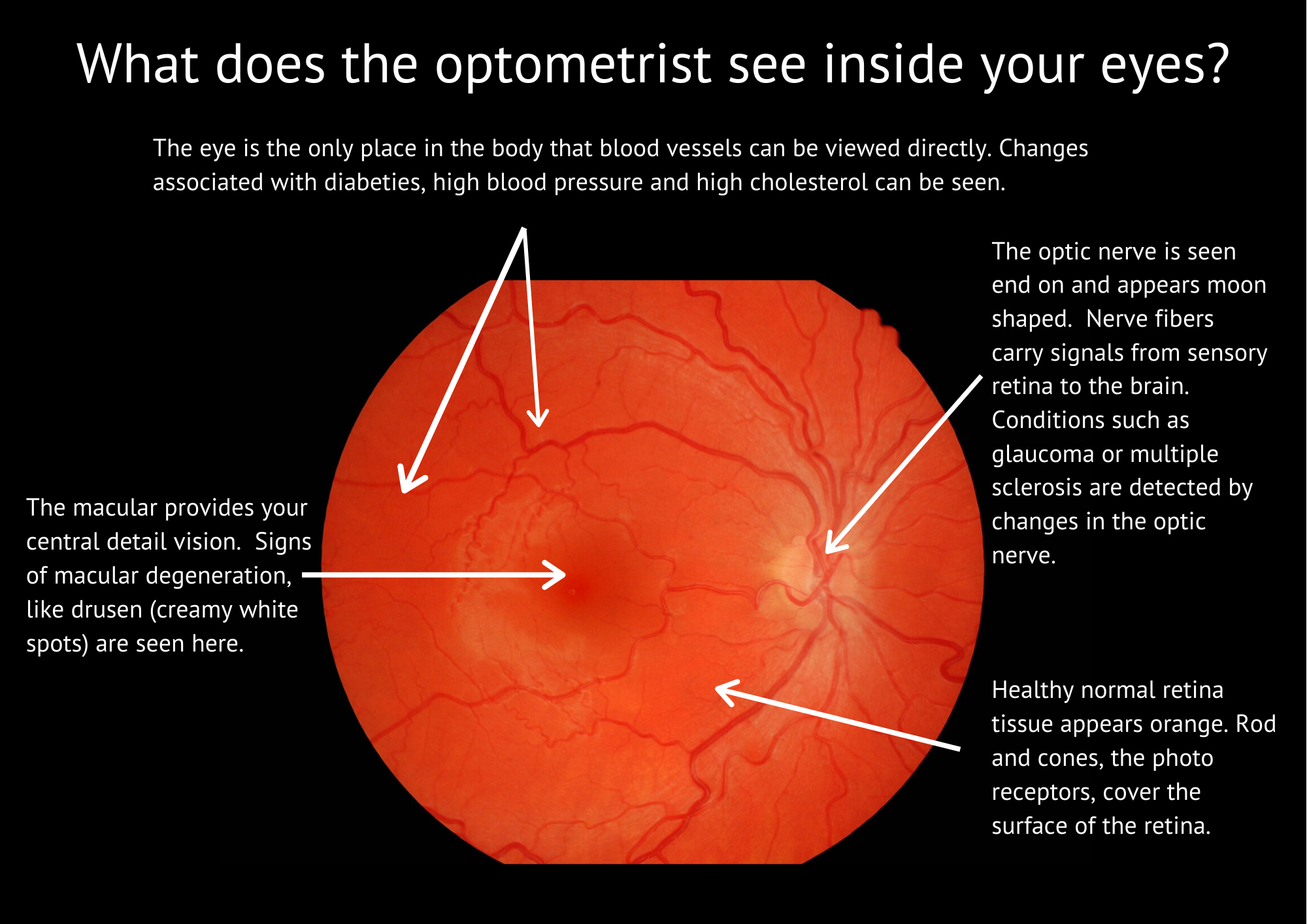Print out the entry form below, fill it in and drop it into the practice to go in the draw to win a pair of non prescription Bolle sunglasses - it is that easy. Tell your friends, everyone can enter.
Things we can see in your eyes.
As part of every eye check we examine your eyes with a microscope - have you ever wondered what we can see? Here is the big reveal!
A lot of the tissue in the eye is transparent - so that light can pass through to get to the retina. Let’s start at the front - the cornea. We often see evidence of previous infections or injuries. In the fluid filled chamber inside the front of the eye our microscope allows us to see cells floating. Checking the lens we look for early signs of cataract. Then we see the vitreous gel, where we often find the ‘floaters’ which people describe for us. Finally the retina comes into focus.
The retina is red - sometimes seen as a red eye in photos taken using a flash. We have a check list as we examine the blood vessels, the optic nerve and the macula.
Sometimes we want to go deeper - to ‘look’ at the layers of the retina in more detail. This is when we use OCT scanning technology. While the information this provides is quite amazing, it does not quite match to viewing down the microscope - seeing individual red blood cells tumbling along the capillaries at the front of the eye will always be special for me.
International Myopia Congress Tokyo
In September I was fortunate enough to attend the International Myopia Congress, held in Tokyo (just ahead of the Rugby World Cup). Myopia, or short-sightedness, means vision close range is clear but things further away (TV, the board at school, road signs) are blurred.
As global rates of myopia increase rapidly, particularly in South East Asian countries, there are concerns about the long term impact this will have on future eye disease (risk of retinal detachment, macular degeneration and glaucoma increase with myopia).
The four day congress brought together researchers, academics and clinicians from all around the world and sessions were presented by authors of clinical and scientific research.
The community is trying is understand what causes myopia. This effort included studies into genetics as well as animal research. Other projects look at epidemiology, trying to figure out who is effected and identify environmental factors which may play a role. So far we know the importance of two hours per day time spent outdoors will delay the onset of myopia in children.
One day was dedicated to studies following intervention strategies, such as ortho-K contact lenses, and soft contact lens designs.
Rising rates of myopia have been described as an epidemic, and resulted in some large scale public health initiatives in Taiwan and Singapore. It was inspiring to hear from individuals who had played vital roles in pushing these program’s ahead.
800 delegates attended in Tokyo. The next congress will be in Rotterdam in 2021.
Ascend Contact Lens $50 Cash Back Offer
Summer is approaching and now is a good time to think about contact lenses. If you wear Ascend contacts, you might be eligible for this offer - a bonus when you order three months supply.
If you have thought about trying contacts - here is a nice incentive. Come in and be fitted with lenses, order a three month supply and there is a cash back bonus.
ASCEND™ have a range of contact lenses which gives excellent options for both every day and occasional use - a practical alternative to glasses.
So whether you’re new to contact lenses or have been wearing them for a while, or perhaps you just want to try contact lenses for occasional use, talk to us.
Low Vision Support Group Meeting Monday 4 November
If you are struggling with your vision join our Low Vision Support Group. Meetings are at Summerset Village (Mansell Drive, Warkworth). If you, or a friend or family member, are struggling with vision please come along. People with glaucoma and macular degeneration are also welcome.
Our next meeting is 1.30pm Monday 4 November. We will have a demonstration of electronic magnifiers by Nashish from Humanware. These powerful magnifiers solve some of the frustrations of traditional magnifying lenses. Usually there is a trade off between the enlargement and the field of view - when the print is large enough to read you can only see one word at time. Electronic magnifiers solve this and many people love both the portable devices, as well as the larger screen magnifiers.
For more information you can call us, or just come along.
Blind + Low Vision NZ - a new name
From October 2019, the Blind Foundation takes on a new name: Blind & Low Vision NZ. The name change comes after 18 months of research, and the organisation hopes this will create increased relevance to those who could benefit from their services and support.
Blind & Low Vision NZ gives people who are blind or have low vision practical and emotional support to do the things they need and want to do, with self-reliance and confidence. As well as supporting individuals, the organisation advocates for inclusive communities and optimal eye care services for all New Zealanders.
John Mulka, Blind & Low Vision NZ Chief Executive, said that while the name Blind Foundation was widely known, many people did not know that the organisation’s services are relevant to people who have significant sight loss that can be described as low vision.
“By including the term ‘low vision’, our new name better represents the diversity of sight loss that people experience. We hope it helps people struggling with their vision without treatment options, to understand this is a place they can connect with for practical and emotional support.”







